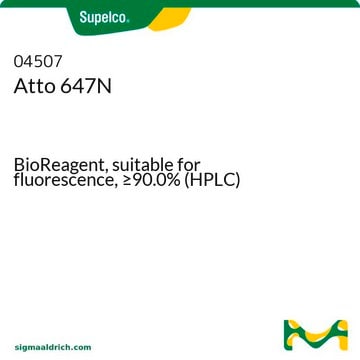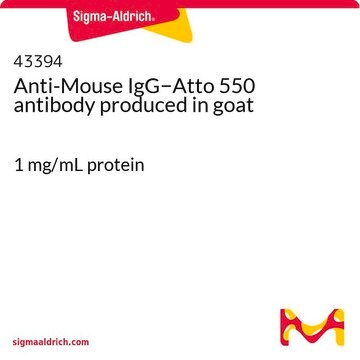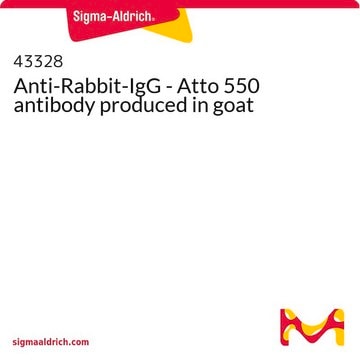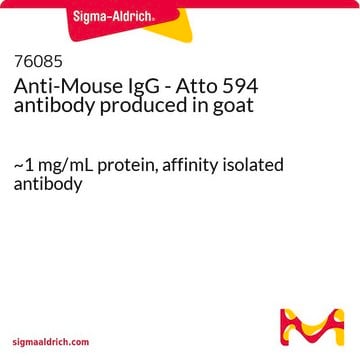65906
Phalloidin–Atto 647N
BioReagent, suitable for fluorescence, ≥80% (HPLC)
Synonyme(s) :
Atto 647N, Atto 647N-Phalloidin
About This Item
Produits recommandés
Gamme de produits
BioReagent
Pureté
≥80% (HPLC)
Fabricant/nom de marque
ATTO-TEC GmbH
λ
in methanol
Absorption UV
λ: 640-646 nm Amax
Adéquation
suitable for fluorescence
Méthode de détection
fluorometric
Température de stockage
−20°C
Catégories apparentées
Description générale
Application
Caractéristiques et avantages
- StrongAbsorption.
- HighFluorescence quantum yield.
- HighPhotostability.
- MinimalTriplet formation.
- GoodSolubility.
- Excellent Ozone Resistance.
Informations légales
Mention d'avertissement
Danger
Mentions de danger
Conseils de prudence
Classification des risques
Acute Tox. 1 Inhalation - Acute Tox. 2 Dermal - Acute Tox. 2 Oral
Code de la classe de stockage
6.1A - Combustible acute toxic Cat. 1 and 2 / very toxic hazardous materials
Classe de danger pour l'eau (WGK)
WGK 3
Point d'éclair (°F)
Not applicable
Point d'éclair (°C)
Not applicable
Équipement de protection individuelle
Eyeshields, Faceshields, Gloves, type P3 (EN 143) respirator cartridges
Certificats d'analyse (COA)
Recherchez un Certificats d'analyse (COA) en saisissant le numéro de lot du produit. Les numéros de lot figurent sur l'étiquette du produit après les mots "Lot" ou "Batch".
Déjà en possession de ce produit ?
Retrouvez la documentation relative aux produits que vous avez récemment achetés dans la Bibliothèque de documents.
Les clients ont également consulté
Notre équipe de scientifiques dispose d'une expérience dans tous les secteurs de la recherche, notamment en sciences de la vie, science des matériaux, synthèse chimique, chromatographie, analyse et dans de nombreux autres domaines..
Contacter notre Service technique









